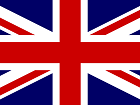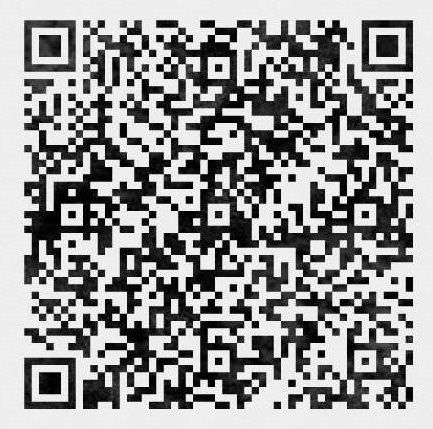Importing&Shipping from China to the United States, A Complete Guide
About to import products from China to the United States? In this guide, we explain what US based businesses must know before buying consumer goods from trading companies and manufacturers in China, and other Asian countries.
This article explains what startups and small businesses must know about US product regulations, labelling requirements and transportation restrictions.
In addition, we also give you an introduction to customs bonds, customs value calculations, import taxes and freight costs.
In case you have questions about shipping, this guide is the answer to all about shipping from China to the USA
Product Safety Regulations
Importers based in the United States, must keep track of two sets of product regulations:
· Federal regulations (applicable in all US states)
· State regulations (applicable in certain states only)
Let’s start with the first category, as this is what affects everyone. Below follows an overview of relevant government bodies and regulations, in the United States:
a. CPSIA: This is a framework regulation, which applies to (at least so far) to toys and other children’s products. The definition of a Children’s product is, currently, any product that is marketed as appropriate for children aged 12 or younger.
CPSIA is not a standard. Instead, CPSIA refers to ASTM, and other, product standards. It also sets requirements for product certification, documentation and labelling.
b. FCC: The Federal Commission of Communications (FCC) regulates all communication devices, sold in the United States. FCC administers various legal acts, such as FCC Part 15, applicable to electronics.
c. FFA: The Flammable Fabrics Act (FFA) is administered by the CPSC, and sets requirements for fabric flammability. The FFA also requires American importers to issue product certificates, and other documents.
d. Restricted Substances: The CPSC restricts various substances, in certain products (primarily as part of the CPSIA). However, some of these restrictions may apply to non-children’s products. Click here for the full list.
Keep in mind that it’s always the importer’s responsibility to ensure compliance with all applicable safety standards and regulations.
Let’s move on. As mentioned, you may also need to consider regulations that are not administered at a Federal level. Below follows an overview of state regulations, that affect importers in all US states:
a. California Proposition 65: CA Prop 65 regulates more than 800 chemicals, in consumer products. There are two ways to comply:
Option 1: Ensure that your product is compliant, by either obtaining documentation from your manufacturer in Asia – or submit a sample for compliance testing.
In most cases, importers are forced to pay for laboratory testing, as the majority of manufacturers, in various industries, cannot provide chemical composition data for materials and components.
Option 2: Attach a warning label to the product, explaining that the product may contain substances that may cause damage to reproductive functions, or cause cancer.
CA Prop 65 compliance is mandatory for all US importers, based on – or selling to customers in – the State of California.
While it is only mandatory for companies with 10, or more, employees – smaller businesses are often affected, as online marketplaces and retailers tend to set terms that transfers (at least part of) the liability to the importer.
b. California Technical Bulletin 117-2013 (TB117-2013)
TB117 is a fire safety regulation, applicable to upholstered furniture. Compliance is mandatory, for certain types of furniture sold in the State of California.
c. Other state regulations
Many, if not most, US states have implemented local substance restrictions (i.e., Phthalate bans), packaging and reporting requirements. Therefore, you should contact local authorities, and seek legal assistance, to ensure that your products are compliant in your target market.
Labelling Requirements
In addition to product safety regulations, you must also ensure compliance with all mandatory labelling requirements.
While the exact requirements list depends on the product (there are no uniform regulations that apply to every single product), the list provides you with guidelines:
Children’s Products
· Warning Label
· CPSIA Tracking Label
· Country of Origin
Electronics
· FCC Mark
· Country of Origin
Apparel
· Fiber Composition
· Care Instructions
· Flammability Warning
· Country of Origin
Packaging
· Warning Label
· Country of Origin
Country of Origin
The Country of Origin label is mandatory for virtually all products imported from China to the United States. This is not, however, the case in other major markets – such as the European Union.
While a ‘Made in China’ print on the product and/or its packaging is normally sufficient, some products have more specific labelling requirements.
Watches is one such product. When importing Watches, the importer is actually not required to label it as ‘Made in China’ – even if the Watch is assembled in Shenzhen. No, instead the origin is determined by the movement.
Think about that the next time you see “Made in Japan” or “Swiss Movement”. Now, that being said, Made in China is not a mark of bad quality. It all comes down to the management.
Non-Mandatory Standards and Associations
In addition to the regulations and government agencies introduced above, you should also be aware of non-state administered product standards. In the United States, there are various established non-state organizations, that develop and implement standards:
· Underwriters Laboratories (UL): www.ul.com
· American Society for Testing and Materials (ASTM): www.astm.org
· American National Standards Institute (ANSI): www.ansi.org
While UL, ASTM and ANSI are private organizations (non-government), federal agencies such as the CPSC require that certain products do comply with standards developed by these organizations.
For example, the CPSIA requires importers and domestic manufacturers of toys and children’s products to ensure compliance with ASTM F963.
In one recent, and very interesting case, the CPSC made a public statement, announcing that hoverboards imported to the United States, must be compliant with UL 2272 (Outline of Investigation for Electrical Systems for Self-Balancing Scooters). What is interesting here is that UL standards are not mandatory.
Yet, the CPSC made them so, and with very good reason.
That said, the CPSC still doesn’t require American importers to obtain approval from Underwriters Laboratories – ‘only’ that the product is in reality compliant.
Sounds confusing? You are not alone…
Shipping
Transportation Regulations
When buying from China to the United States, there are two challenges to consider:
1. Wooden packing materials must comply with ISPM 15 (unless exempt)
2. Lithium batteries, which are potential fire hazards, must comply with very strict packaging and documentation requirements.
Customs & Taxes
Products imported from China to the United States, are normally subject to import duties. The import duty rate depends on two factors:
a. HS Code (used to classify products)
b. Country of Origin (in this case, China)
In most cases, the duty is a percentage, calculated based on the customs value (we’ll get to that in a bit). However, for some products, the duty rates have fixed lower and upper limits.
Below follows two examples:
a. Percentage: X%
b. Percentage and lower / upper limit: X% (min. $Y / max. $Y)
Tax ID
To import goods valued above $2,500, the individual or business must have a Tax ID (or EIN). This is assigned by the IRS to US citizens, and companies. The Tax ID must also be provided to the Customs Broker.
Merchandise Processing Fees
Merchandise Processing Fees (MPF) apply to all air and sea shipments and are based on the value of goods . This fee is 0.3464% with the following minimum and maximum values:
· Min: US$25
· Max: US$485
Harbor Maintenance Fees
Harbor Maintenance Fees (HMF) are applicable on all sea freight shipments. The HMF is set at 0.125% of the value of the goods, with the following minimum and maximum values:
· Min: None
· Max: None
Customs Value
Duty rates and other taxes are calculated based on the Customs value. In the United States, the Customs value as defined as follows:
“The transaction value of imported merchandise is the price actually paid or payable for the merchandise when sold for exportation to the United States, plus amounts equal to:
A. The packing costs incurred by the buyer.
B. Any selling commission incurred by the buyer.
C. The value, apportioned as appropriate, of any assist.
D. Any royalty or license fee that the buyer is required to pay, directly or indirectly, as a condition of the sale.
E. The proceeds of any subsequent resale, disposal, or use of the imported merchandise that accrue, directly or indirectly, to the seller. “
At a minimum, the United States Customs Value equals the FOB (Free on Board) value. As such, it does not include international freight costs (which, for the sake of comparison, are part of the customs value in the EU).
However, the Customs value may, depending on the circumstances, include other costs – such as:
· Tooling and molds
· Services paid for to the manufacturer (i.e., design services undertaken in China)
· Product samples
These are called assists, and must be declared upon entry into the United States.
For more information about to calculate the customs value, read this publication from the United States Customs and Border Protection.
Customs Broker
As a US based importer, you need to find a Customs Broker. The role of the Customs Broker, is to file entries and submit documents to the US customs authorities, on behalf of the importing company.
Many freight forwarders also act as Customs Brokers, but you shall not take this for granted. You must find a Customs Broker, and obtain a Customs Bond, before you import products from Asia.
In order for a Customs Broker to service an importer, the importer has to sign a power of attorney , authorizing the Customs Broker to clear the cargo on your behalf.
Customs Bonds
Through the Customs Broker, you can buy a Customs Bond. There are two types:
1. Single Entry Customs Bond (Valid for one shipment only)
2. Continuous Entry Customs Bond (Valid for a set time duration, for example 1 year)
The Customs Bond must be purchased before the cargo departs from the Port of Loading (i.e., Hong Kong or Shenzhen). That said, Customs Bonds are only mandatory, if the goods are valued at US$2,500, or above.
Then a Formal entry is needed, in which case the Customs Bond is mandatory. You may choose to buy a Customs Bond even if the goods are valued less than that amount. However, in this last case, it’s not mandatory.
As mentioned, you buy the Customs Bond from your Customs Broker. To do so, you must provide the Customs Broker with the following:
· Tax ID
· Sign a Power of Attorney

 English
English Spanish
Spanish Arabic
Arabic